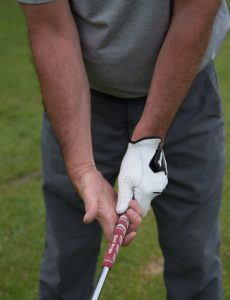Putters
 As far as putters go, they come in all sizes and shapes and golfers choose them according to personal preference.
As far as putters go, they come in all sizes and shapes and golfers choose them according to personal preference.
Putters are used on the putting green to roll the ball across the green into the hold. Some golfers keep a wide selection of putters; other golfers have a favorite they use all the time. Once you find a putter you like, hold on to it and cherish it. It will be your friend.
Golf Shoes
 While having golf shoes isn’t a requirement, they can help you. Their spiked bottoms will help you stay grounded and rooted while you are swinging.
While having golf shoes isn’t a requirement, they can help you. Their spiked bottoms will help you stay grounded and rooted while you are swinging.
Shopping for golf shoes really isn’t that different than shopping around for regular shoes. The only thing you should keep in mind when shopping for golf shoes is most courses don’t allow metal spiked shoes on their courses. Look for golf shoes that have plastic spikes, and possibly shoes that have replaceable prongs.
Golf Gloves
 There are some golfers that don’t wear a golfing glove. However, the majority of golfers do wear golfing gloves and beginners are encouraged to play with the aid of a glove. Gloves are vital to helping you grip and stay in control of the club.
There are some golfers that don’t wear a golfing glove. However, the majority of golfers do wear golfing gloves and beginners are encouraged to play with the aid of a glove. Gloves are vital to helping you grip and stay in control of the club.
Golfers don’t wear two gloves, just one. If you are right handed, you will wear a glove on your left hand, and vice-versa.
Golf gloves come in all sizes for men, women, and children, and they come in a variety of materials, yet leather is the most popular material for golf gloves.
You should know that some golfers will take off their gloves when they are putting so they can have more “feel” during the putt. This is a personal decision and there is no norm.






